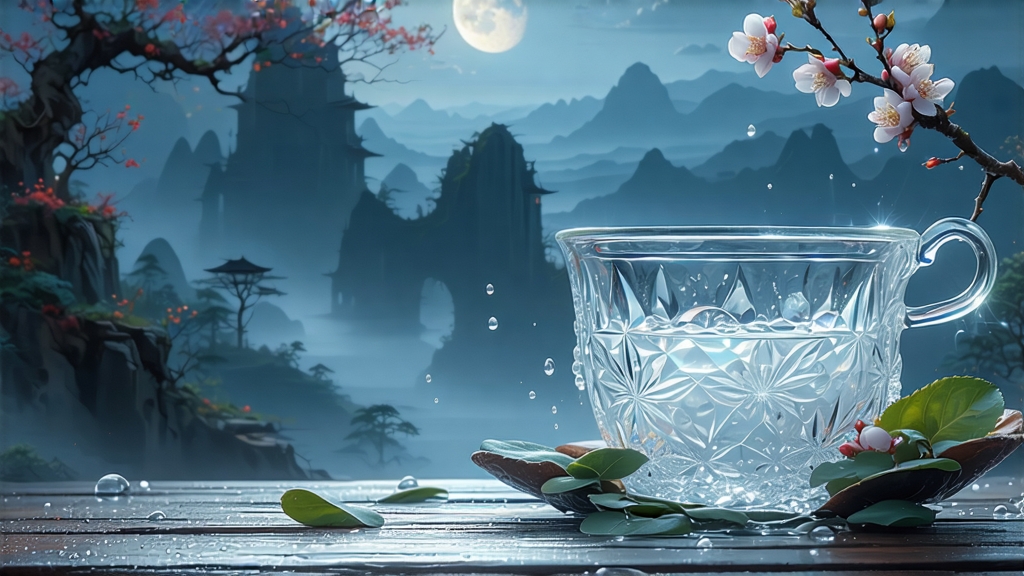
Bai Hao Yin Zhen—literally “White Hair Silver Needle”—is the most aristocratic member of the Chinese white-tea family. To the uninitiated it may look like a handful of dried pine needles, yet once hot water embraces the buds they reveal a lineage that stretches back to the Song imperial court, a fragrance reminiscent of late-spring meadow hay, and a liquor so pale that moonlight seems to have been poured into the cup. This essay invites the international reader to travel beyond the supermarket teabag and discover why Silver Needle is considered the living archive of Chinese minimal-processing wisdom.
-
Historical echoes
The first verifiable record of “white tea” appears in Song-dynasty treatises on tribute tea (960-1279 CE), but those cakes were pressed from broad-leaf cultivars in neighboring Jiangxi. The modern story begins in coastal Fuding county during the early Qing, when garden managers noticed that the local Da Bai Hao cultivar—Big White Down—produced unusually plump buds whose surface was cloaked in silvery trichomes. When lightly withered instead of pan-fired, the buds retained their down and developed a naturally sweet, low-tannin cup. By 1796 the buds were being presented to the imperial household; export followed when European apothecaries touted the tea’s “cooling” properties. Silver Needle thus became China’s first intentionally non-oxidized export, predating the green-tea craze of the nineteenth century. -
Terroir and cultivar
Authentic Bai Hao Yin Zhen is restricted to two micro-zones: Fuding and neighboring Zhenghe in northern Fujian. The region’s red lateritic soil is rich in iron and quartz, while the East China Sea injects morning fog that slows photosynthesis, concentrating amino acids. Only two cultivars are legally recognized: Fuding Da Bai Hao and Zhenghe Da Bai. The former yields slender, needle-shaped buds with a mango-like sweetness; the latter produces slightly stouter buds and a deeper, hay-like aroma. Gardens sit between 200-600 m elevation; above that, night temperatures drop too low for the tender buds to survive. -
Plucking etiquette
The harvest window opens for barely ten days each spring, typically from mid-March to early April, when the bud reaches 2.5-3 cm but has not yet unfurled into a leaf. Pickers work at dawn while dew still glistens, using only the thumb and index finger to snap the bud without squeezing sap—a skill that takes three seasons to master. A seasoned plucker collects roughly 2,000 buds per hour; 30,000 buds (about 500 g finished tea) represent an entire day’s labor for five workers. -
The craft of “doing nothing”
White tea’s philosophy is expressed in the phrase “bu sha qing, bu rou nian”—no killing-green, no rolling. Once back at the shed, the buds are laid on shallow bamboo trays 1 cm thick and left to wither for 36-48 hours. The first 12 hours are “green wither,” during which enzymes remain active, converting grassy aldehydes into floral alcohols. Temperature is kept at 22-26 °C with 65-70 % relative humidity; any hotter and the buds redden, invalidating the grade. The second phase is “sun wither,” a gentle exposure to late-morning March sun for 20-30 minutes that catalyzes a Maillard reaction, adding chestnut notes. Finally the buds enter a low-temperature oven (40 °C) for 15 minutes to reduce moisture to 8-9 %. No machine rolling, no charcoal roasting—just air, time, and the watchful eye of a master who decides when the bud has surrendered its inner moisture while still clutching its silver coat. -
Grading and authenticity markers
The highest grade, “Imperial Silver Needle,” must be 100 % bud, no stem, no leaf. When dropped on a porcelain plate the buds should produce a metallic clink, signifying low residual moisture. Under a 10× lens the down appears as a uniform spiral, not patchy or broken. Counterfeit versions from neighboring provinces often include pale-green small leaves or are coated with talc to imitate down; these sink immediately in water, whereas authentic buds float vertically for three seconds before drifting sideways like miniature sub